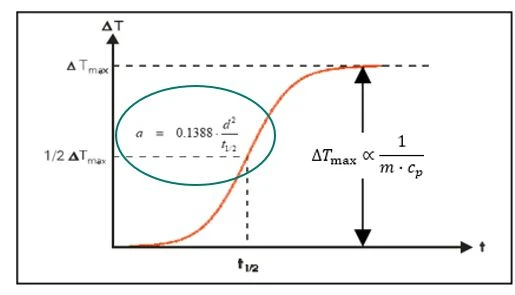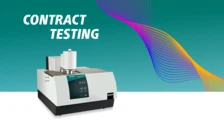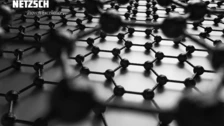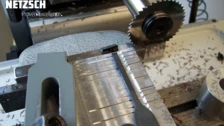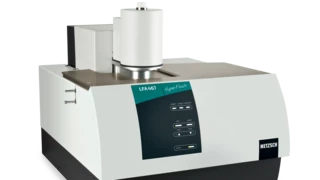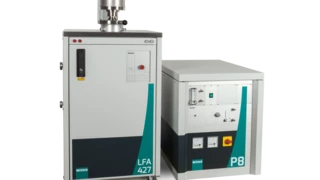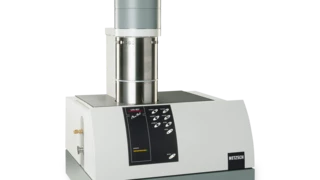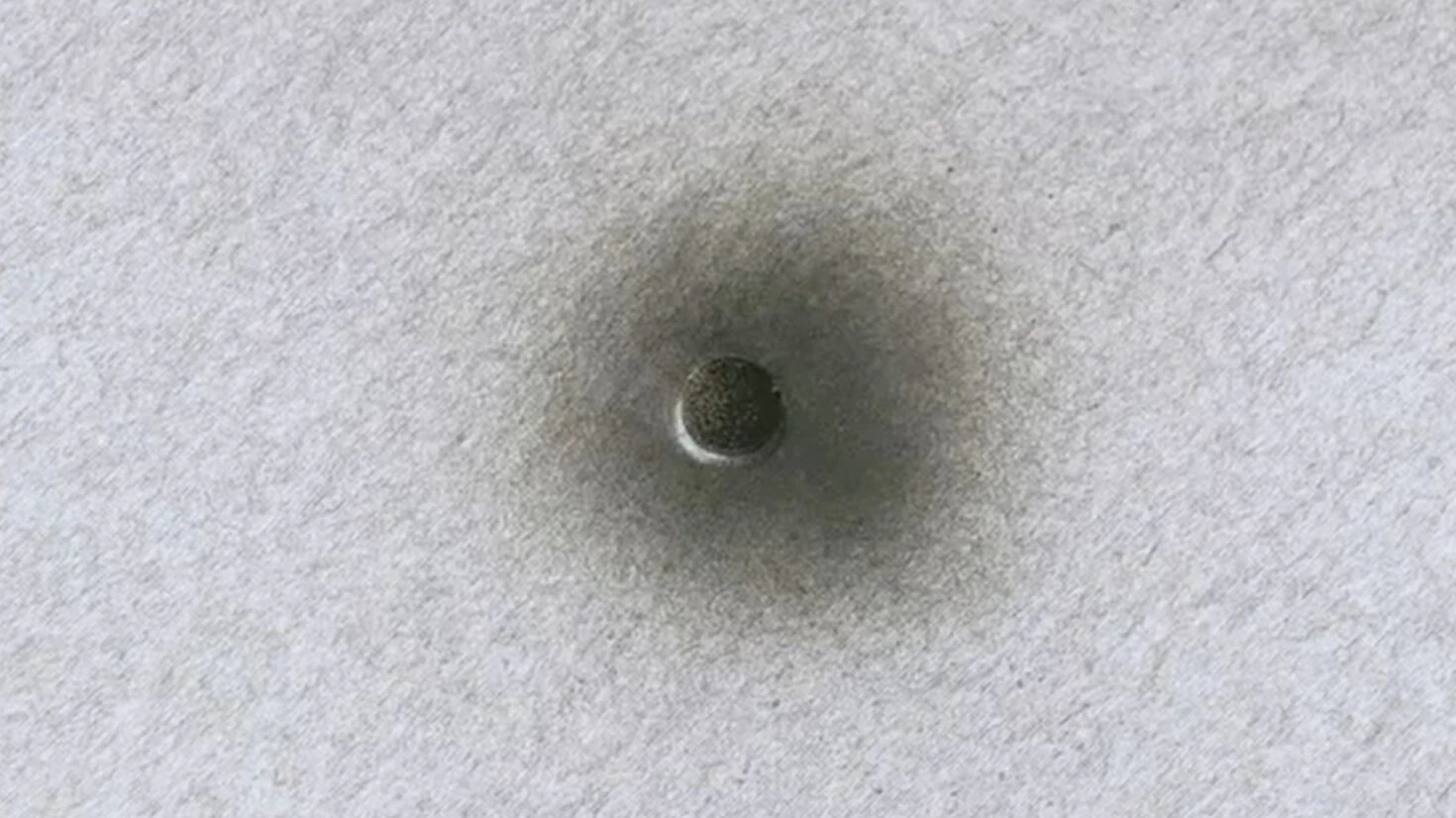
26.09.2023 by Aileen Sammler
About the Influence of Graphite Coating for High-Conductive Materials
Tips and Tricks for Measurements by Means of Laser Flash Analysis (LFA)
Thermal analysis techniques like Laser/Light Flash Analysis (LFA) provide invaluable insights into the behavior of materials under varying temperature conditions. For the precise measurement of thermophysical properties such as Thermal DiffusivityThermal diffusivity (a with the unit mm2/s) is a material-specific property for characterizing unsteady heat conduction. This value describes how quickly a material reacts to a change in temperature.thermal diffusivity, the LFA method has proven to be a fast, versatile and precise absolute method.
In this blog article, we will focus on the significance of using graphite coating in LFA measurements, especially for high-conductive samples like copper or aluminum. Let's explore the role of graphite in enhancing the accuracy of LFA measurements and understanding how to optimize the coating for different material properties.
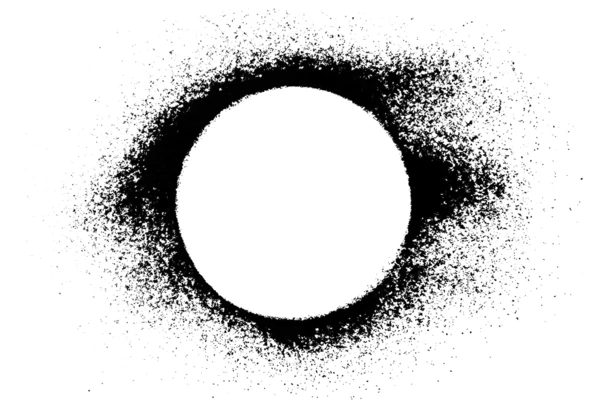
Why Use Graphite Coating?
Graphite coatings serve multiple purposes in LFA measurements. They enhance the emission and absorption properties of the sample surface, ensuring a better signal-to-noise ratio for the detector. This results in more accurate measurements. In addition, graphite is non-reflective. This minimizes interference during analysis and provides reliable data for further analysis.
The Influence of Graphite Layer on the Thermal Resistance
For standard samples like polymers or ceramics, which have low Thermal ConductivityThermal conductivity (λ with the unit W/(m•K)) describes the transport of energy – in the form of heat – through a body of mass as the result of a temperature gradient (see fig. 1). According to the second law of thermodynamics, heat always flows in the direction of the lower temperature.thermal conductivity, the impact of the graphite layer is negligible compared to the high thermal resistance of the sample. In such cases, a thin graphite layer of a few micrometers is sufficient.
However, for highly conductive materials like copper or aluminum, with shorter measurement times under around 150 milliseconds, the graphite layer can significantly influence the results. Hence, the choice of graphite coatings should be tailored based on the specific measurement goals.
Coating High-Conductive Samples for Thermal DiffusivityThermal diffusivity (a with the unit mm2/s) is a material-specific property for characterizing unsteady heat conduction. This value describes how quickly a material reacts to a change in temperature.Thermal Diffusivity Measurements
The ideal way of coating a high-conductive sample with graphite depends on which material propertyisto be determined. When measuring Thermal DiffusivityThermal diffusivity (a with the unit mm2/s) is a material-specific property for characterizing unsteady heat conduction. This value describes how quickly a material reacts to a change in temperature.thermal diffusivity of high-conductive materials such as copper (Cu) or aluminum (Al) with short duration (see figure 1), using no graphite or just a small amount (like a “touch”) of graphite is suitable. This approach minimizes the impact of the graphite layer on the measurement, ensuring accurate results.
Coating High-Conductive Samples for Specific Heat Capacity Measurements
For Specific Heat Capacity (cp)Heat capacity is a material-specific physical quantity, determined by the amount of heat supplied to specimen, divided by the resulting temperature increase. The specific heat capacity is related to a unit mass of the specimen.specific heat capacity measurements, the goal is to compare the maximum rise of the signal between the sample and reference. To achieve this, both the sample and reference must have the same emission and absorption properties. To accomplish this, a complete graphite layer is essential.
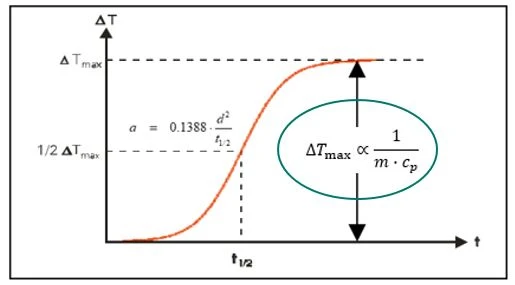
Investigating Graphite Coating on Copper Sample
To demonstrate the influence of different graphite coatings on the Thermal DiffusivityThermal diffusivity (a with the unit mm2/s) is a material-specific property for characterizing unsteady heat conduction. This value describes how quickly a material reacts to a change in temperature.thermal diffusivity and Specific Heat Capacity (cp)Heat capacity is a material-specific physical quantity, determined by the amount of heat supplied to specimen, divided by the resulting temperature increase. The specific heat capacity is related to a unit mass of the specimen.specific heat capacity of high-conductive materials, a copper sample was analyzed. Copper is a common standard material with known Thermal DiffusivityThermal diffusivity (a with the unit mm2/s) is a material-specific property for characterizing unsteady heat conduction. This value describes how quickly a material reacts to a change in temperature.thermal diffusivity values.
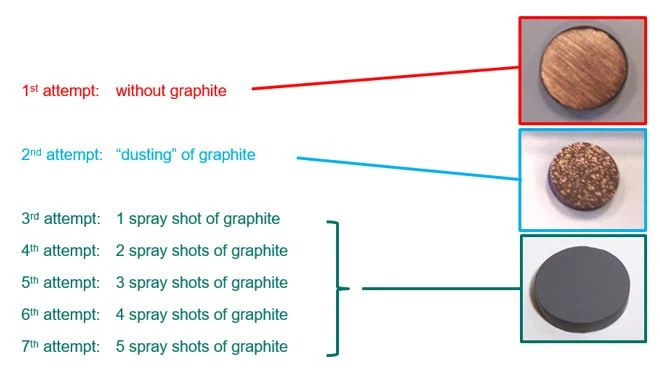
The investigation involved three groups of coating types:
- Blank Sample: Without any graphite coating, the signal remains low due to minimal energy input.
- Touch of Graphite: The result meets the literature value within ± 3%.
- Complete Graphite Layer(s): Each additional layer causes a decrease in thermal diffusivity
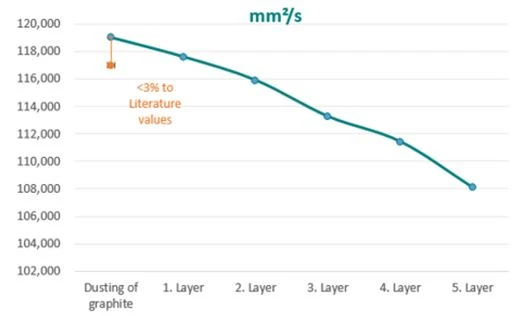
For the determination of specific heat one covering graphite layer is necessary to reach a reasonable maximum. For additional layers the maximum remains on the same level and will therefore not improve the results.

Different Goal, Different Coating! Optimizing Graphite Coating
In summary, the coating of high-conductive samples with graphite should be adjusted based on the specific material property being measured. For thermal diffusivity measurements with short duration, a minimal amount of graphite is sufficient. However, for specific heat capacity measurements, a complete graphite layer is essential to ensure accurate and consistent results.
In cases where both the thermal diffusivity and specific heat capacity need to be determined, it is recommended to split the investigations into two separate measurements. First, measure the thermal diffusivity with a touch of graphite, then clean the sample before applying a complete graphite layer to measure the specific heat capacity.
By understanding and optimizing the graphite coating, researchers can maximize the accuracy and reliability of Laser Flash Analysis measurements, ultimately leading to better insights into material behavior and performance.
